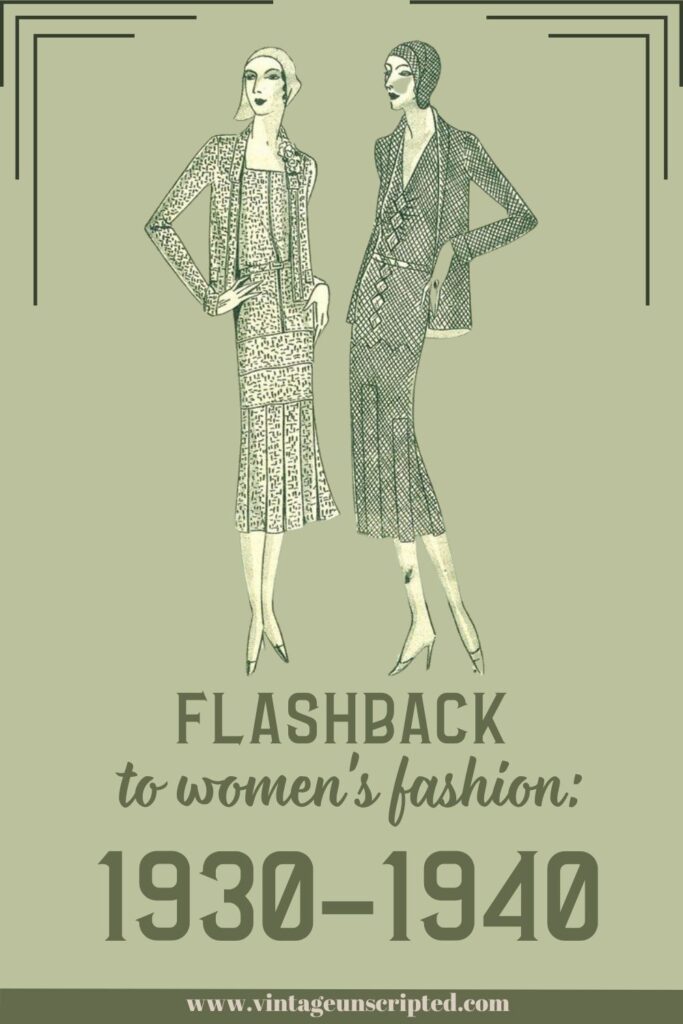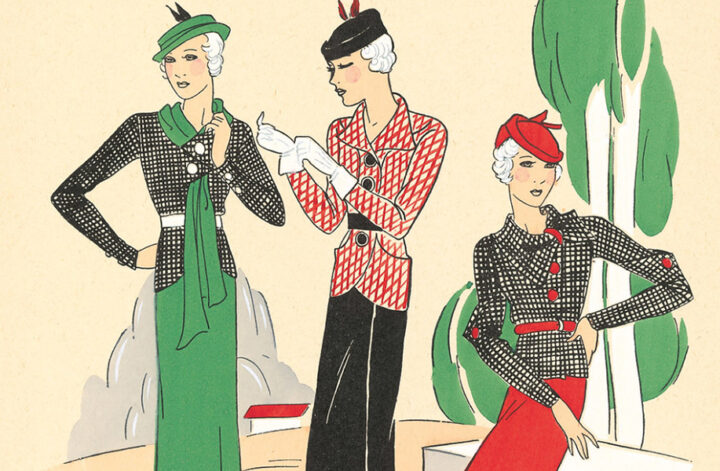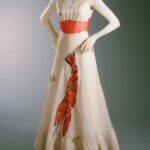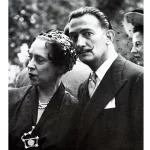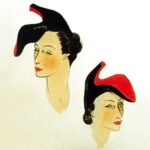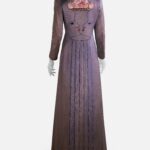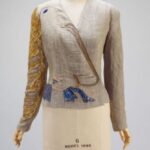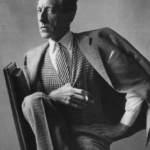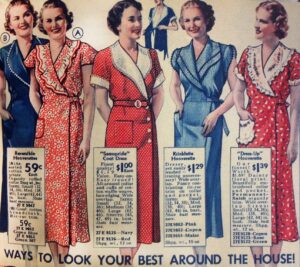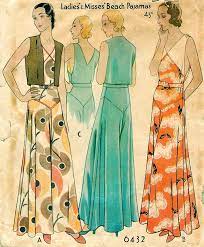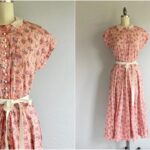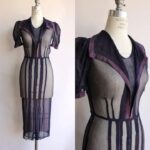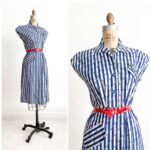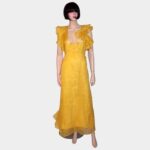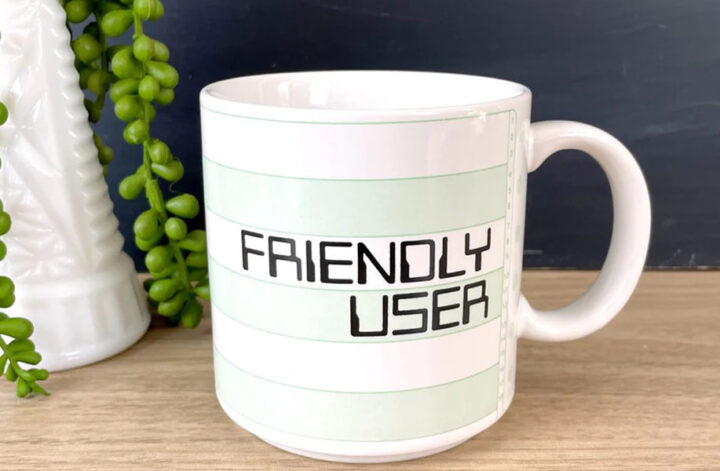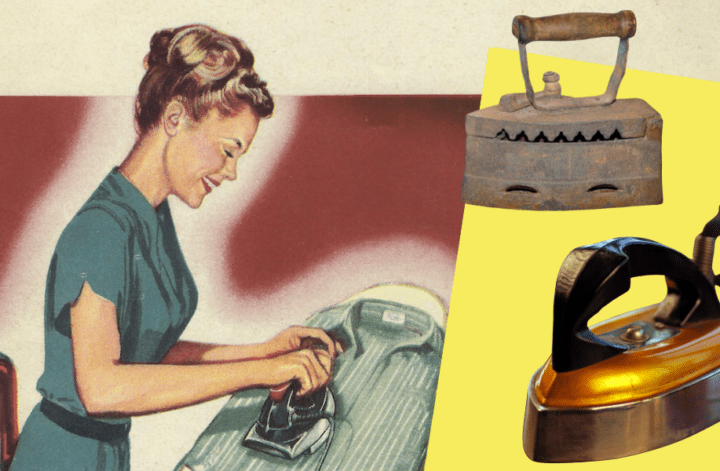A Decade by Decade view of Women’s Fashion in the 20th Century. This 10-part series covers the styles and changes in women’s fashion from 1900 to the year 2000. We discuss everything from designers to fabrics, hem lengths to sleeves. This week we look at vintage women’s fashion: 1930 to 1940. Follow along with us each week as we delve into another decade.
The depression put a damper on the bold fashions of the 20s and created a more severe look during the 1930s. Slim was still the preferred look but it now came with a defined higher waist and bigger shoulders or puffed sleeves to balance out the reality of wider hips. Edward Molyneux was known for his fashionable suits of the day with wider shoulders and defined waistlines.
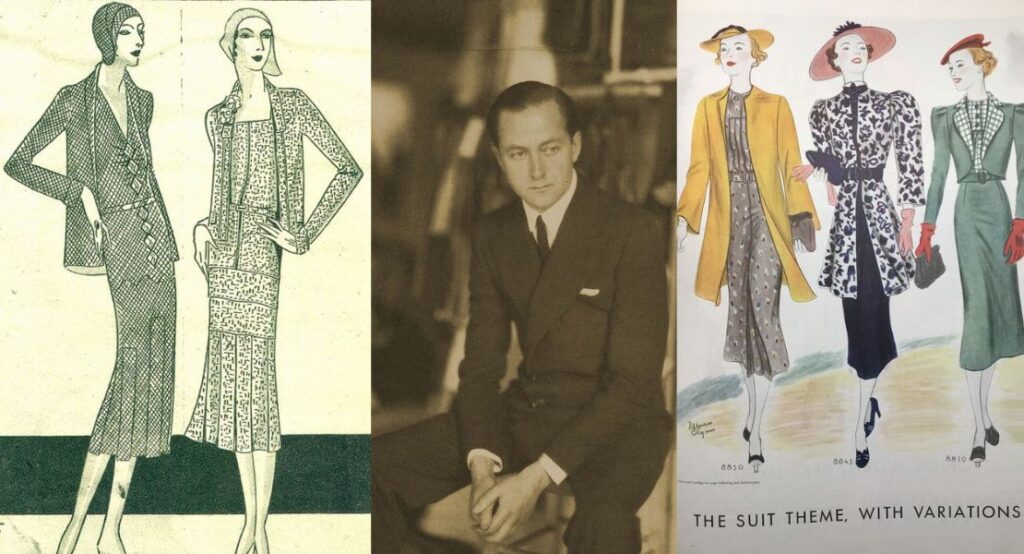
Money was tight and a night out on the town was no longer feasible for many. Movies were an escape from the reality of the depression and women took their fashion cues from the Hollywood stars of the day. On the flip side, practical clothing designed for every day use was more popular with ready-to-wear clothing becoming readily available. Toward the end of the decade, even more severe clothing was created as the war loomed closer. Uniform style clothing for both men and women became more common, along with separates that could be mixed and matched in order to extend a women’s wardrobe.
Although the advertisements of the day showed women as being very tall and even thinner, the reality was something different in most cases. Fashion evolved to meet the proportions of real women. By accentuating the waistline with belts and allowing for a wider hip line and broader shoulders more women could wear the newly made ready-to-wear looks. Another way to create the slimmer look was through the use of bias-cut fabrics, which created a visual flow of fabric and the illusion of a long slimmed-down figure. For those who could afford it, a slinky bias-cut dress was the height of fashion.
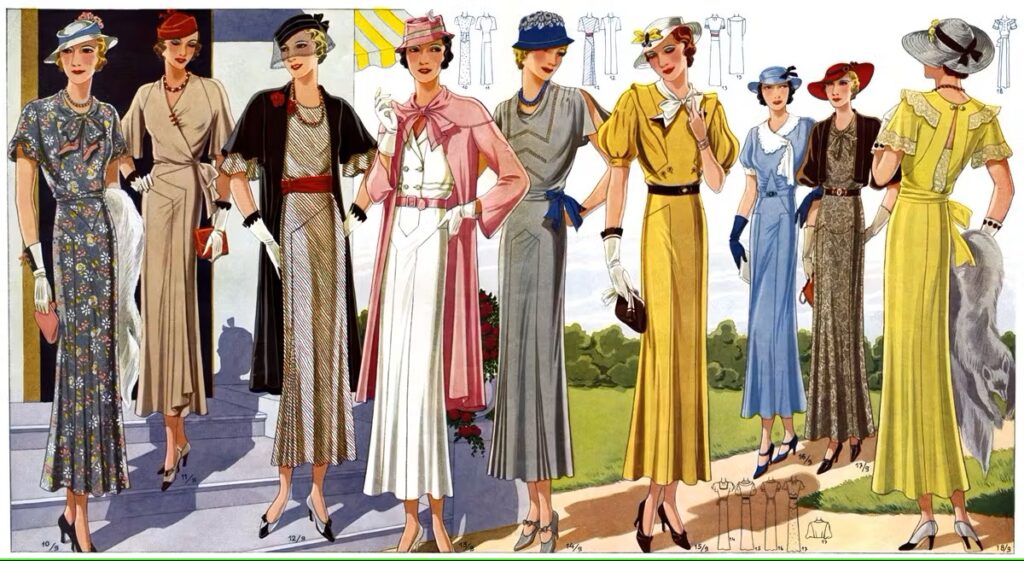
For those who could still afford high fashion, one prominent clothing designer of the time was Madeleine Vionnet who brought the bias cut look to new levels by using it for the entirety of the garment. Her use of soft-flowing slinky fabrics defined her look and elevated her designs to an elegant level. The look was meant to accentuate the natural curves of a woman’s body.
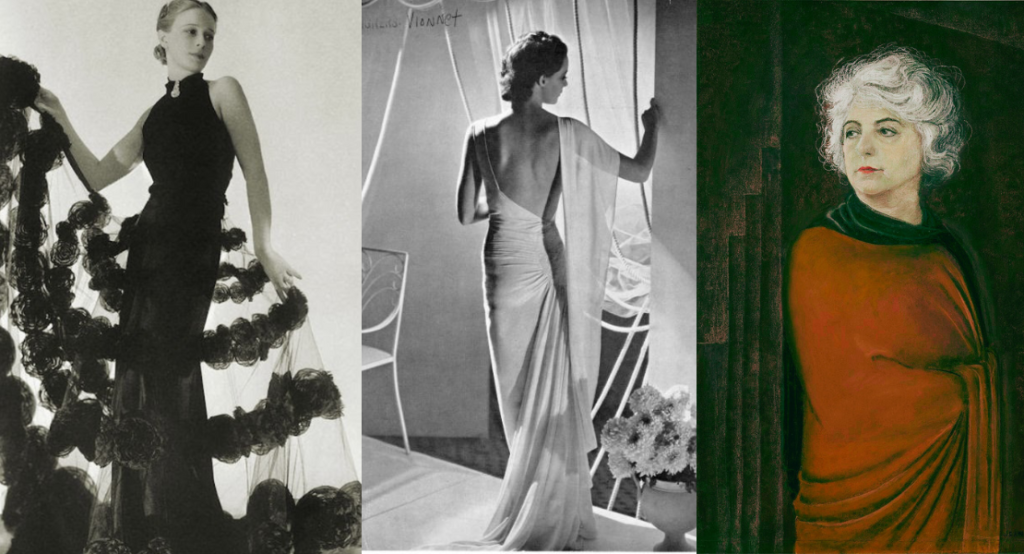
The 1930s brought Elsa Schiaparelli into the limelight again via her collaborations with Salvador Dali and Jean Cocteau. Her Lobster Dress and Shoe Hat created with Dali are legendary as is her evening coat created with Cocteau.
When not out on the town, women of the 1930s wore cotton floral house dresses at home and had begun to wear pants for sporting occasions. The popular beach pajama look of extra wide-legged soft jersey pants with attached or matching loose-fitting tops was extremely popular.
With Shirley Temple exploding on the screen children’s clothing took on new looks as every parent wanted their little girl to wear those sweet frilly dresses and their little boys to be dressed in smart-looking sailor suits. This was a revelation as children’s clothing up to this time had been an afterthought.

A fashion icon of the times was Joan Crawford. Of course, this is well before she was known as the villainous Mommy Dearest. Her broad shoulders led costume designer Adrian to accentuate them rather than try to diminish them. With their collaboration, she quickly became the fashion icon of Hollywood. Her style was a huge part of her allure.
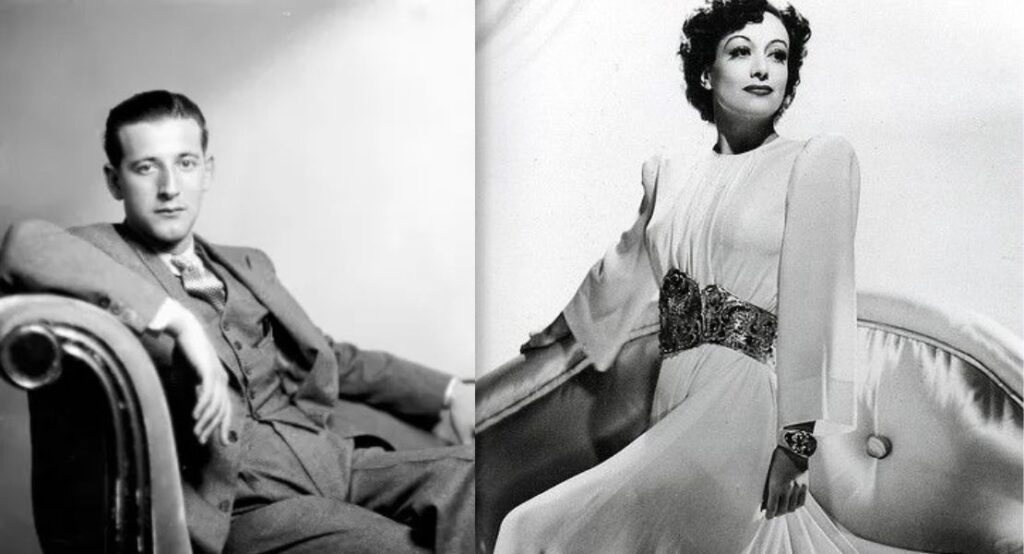
Wear the Look of the 1930s
Explore the other decades by clicking here.
Pin It
